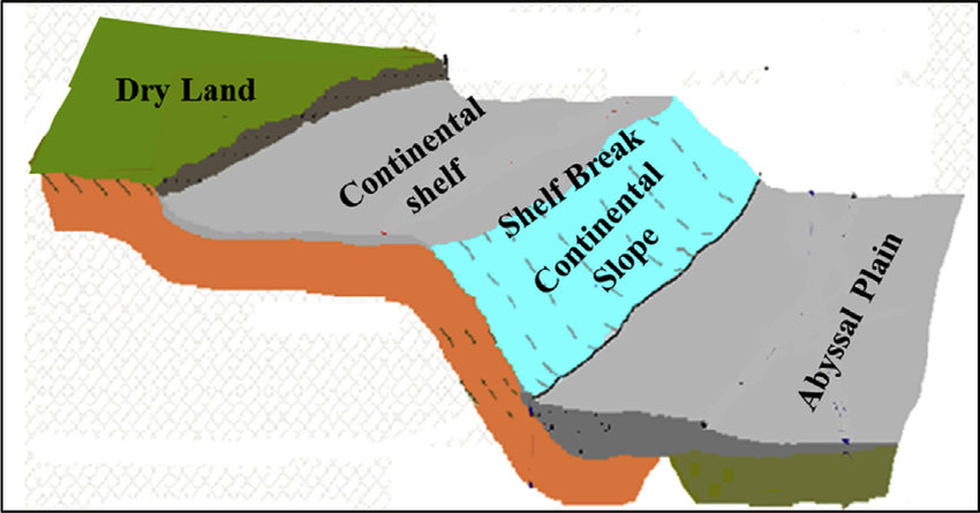About Continental Shelf:
- It is the edge of a continent that lies under the ocean.
- It is the extension of a coastal State’s land territory under the sea.
- It extends from the coastline of a continent to a drop-off point called the shelf break.
- From the break, the shelf descends toward the deep ocean floor in what is called the continental slope.
- The actual boundary of a continent is not its coastline, but the edge of the continental shelf.
- Formation:
- Over many millions of years, organic and inorganic materials form continental shelves.
- Inorganic material build up as rivers carried sediment—bits of rock, soil, and gravel—to the edges of the continents and into the ocean.
- These sediments gradually accumulate in layers at the edges of continents.
- Organic material, such as the remains of plants and animals, also accumulate.
- The widths of the continental shelves vary.
- Most continental shelves are broad, gently sloping plains covered by relatively shallow water. Water depth over the continental shelves averages about 60 meters (200 feet).
- Sunlight penetrates the shallow waters, and many kinds of organisms flourish—from microscopic shrimp to giant seaweed called kelp.
- Ocean currents and runoff from rivers bring nutrients to organisms that live on continental shelves.
- Plants and algae make continental shelves rich feeding grounds for sea creatures.
- The shelves make up less than 10 percent of the total area of the oceans.
- In some places, deep canyons and channels cut through the continental shelves.
- Little light penetrates these submarine canyons, and they are sometimes the least-explored areas of continents.
What is the Extended Continental Shelf?
- Geopolitically, under the United Nations Convention on the Law of the Sea (UNCLOS), coastal countries have special rights over the continental shelf for exploring and exploiting natural resources up to 200 nautical miles (exclusive economic zone).
- In addition to this, such States can make claims for more area in the ocean provided they can scientifically establish to a UN body, called the Commission on the Limits of the Continental Shelf (CLCS), that this claimed area extends unbroken from their landmass all the way to the seabed.
- All of this oceanic area is considered part of a country’s extended continental shelf.
- This gives them rights to commercially mine for valuable minerals, polymetallic nodules, and oil reserves.
